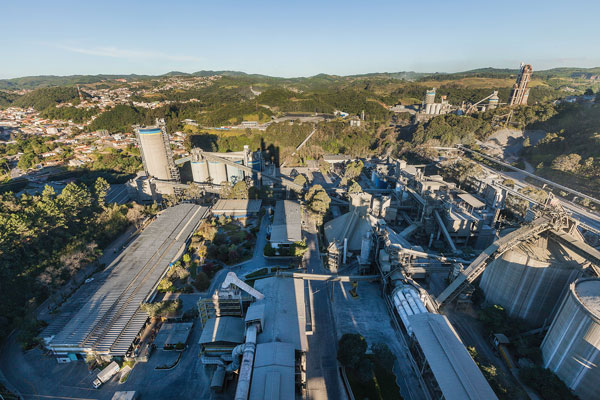It won’t be a surprise to most readers that the Chinese cement industry continued to struggle in the first half of 2024. The China Cement Association (CCA) summarised the situation as a “continuous decline in demand, low price fluctuations and continuous losses in the industry.” Cement output fell year-on-year and four of the six large cement companies featured in this article reported falls in revenue. The CCA estimated that the sector as a whole lost about US$140m in the first half of the year.

Graph 1: Cement output in China, 2019 to first half of 2024. Source: National Bureau of Statistics of China.
Data from the National Bureau of Statistics of China shows that cement output fell by 13% to 855Mt in the first half of 2024 from 980Mt in the same period in 2023. That’s a fall of more than 100Mt and around the annual cement production capacity of the US! Analysis by the CCA reckons that the first half of 2024 saw the lowest cement production since 2011. It blamed the situation on the failure of the real estate market to stabilise and a slowdown in infrastructure investment. Geographically the areas with the biggest declines were the Northeast, Northwest and Central and South regions. Those provinces with the smallest declines were Tibet, Jiangsu, Yunnan and Hebei. However, the CCA was keen to point out that staggered production, through initiatives such as peak shifting, took place in the second quarter of 2024, the producers’ cement inventory fell and cement prices rallied somewhat in June 2024.

Graph 2: Sales revenue from selected Chinese cement producers. Source: Company financial reports. Note: For CNBM Basic building materials segment revenue shown only.
CNBM says that it is the largest cement producer in the world. However, Anhui Conch appears to have sold more cement and clinker than CNBM did… in the first half of 2024 at least. Anhui Conch sold 126Mt of cement and clinker, a drop of 3% year-on-year, compared to 114Mt by CNBM, a drop of 20%. Anhui Conch’s sales revenue and net profit fell by 30% to US$6.4bn and 48% to US$490m respectively. The sales revenue from CNBM’s Basic Building Materials segment, its division that manufactures cement, deceased by 31% to US$5.73bn. Tangshan Jidong and CRC reported similar situations to their larger peers with declines in revenue and profit.
Huaxin Cement and Taiwan Cement both managed to raise revenue, but this was mostly due to their businesses outside of China. Huaxin Cement increased its operating income by 3% to US$2.3bn, with sales volumes of cement falling at home but growing abroad. Indeed, its domestic operating income fell by 32% to US$716m, a similar rate of decline to the other companies featured here. By comparison, the operating income from its overseas cement business rose by 55% to US$502m. Combined with a boost in aggregate sales volumes, this helped to stabilise the company’s financial performance. Taiwan Cement, meanwhile, completed its acquisition of Cimpor Portugal in March 2024 giving it a majority stake in OYAK’s cement business in Türkiye. Subsequently, its revenue in the second quarter of 2024 shot up year-on-year.
CNBM hit the nail on the head in its half-year report when it said: “The overcapacity has not been fundamentally resolved.” China is a big country with lots of regional variation but when cement plants stopped manufacturing cement in the second quarter of 2024 the price improved. Funny that should happen! The government is slowly making adjustments to the real estate market and other mechanisms, including the China national emissions trading system, are due to be applied to cement plants soon. Yet, until that overcapacity is addressed or unless some market fundamentals change then expect to see more of the same in China in the near future.





